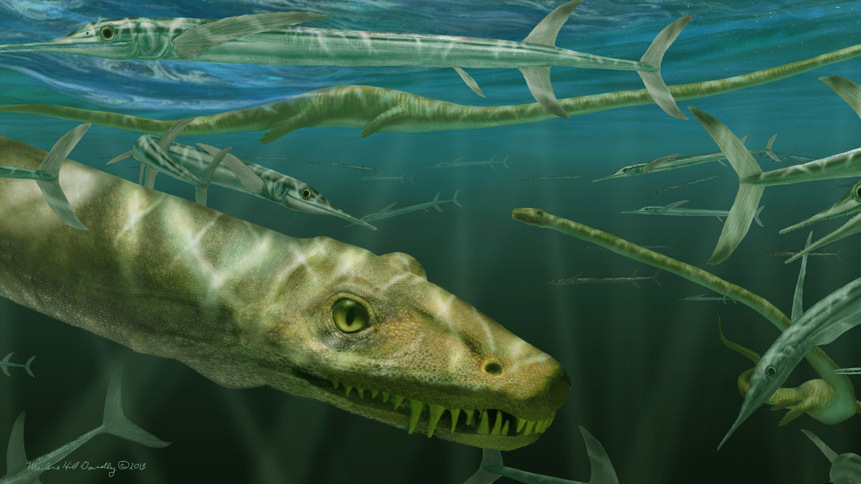Imagine unearthing a creature so extraordinary that it seems to have leaped straight out of ancient mythology and into the realm of science. This is precisely what happened when paleontologists discovered the complete fossil of Dinocephalosaurus orientalis, a marine reptile from the Middle Triassic period that swam the prehistoric seas of what is now southwestern China. This remarkable find not only sheds light on the diversity of life that existed 240 million years ago but also captivates the imagination with its striking resemblance to the mythical Chinese dragon.
The Dinocephalosaurus orientalis, first identified in 2003, has been pieced together to reveal a full 16.8-foot span of this ancient carnivore. The study, published in the journal Earth and Environmental Science: Transactions of the Royal Society of Edinburgh, details the creature’s unique characteristics, such as its nearly 7.7-foot neck containing 32 separate vertebrae. This feature is particularly fascinating when compared to giraffes and humans, who have only seven neck vertebrae.
Nick Fraser, the keeper of natural sciences at National Museums Scotland, expressed his excitement about the discovery: “It is yet one more example of the weird and wonderful world of the Triassic that continues to baffle paleontologists.” He added, “We are certain that it will capture imaginations across the globe due to its striking appearance, reminiscent of the long and snake-like, mythical Chinese Dragon.”
The Dinocephalosaurus orientalis was an adept hunter, using its elongated neck to ambush prey in shallow waters. Its snake-like shape and flippered limbs allowed it to maneuver stealthily, while its serrated teeth were perfect for snaring fish, some of which are still preserved inside the fossilized remains. The discovery of this sea dragon also included poorly preserved skulls, vertebrae, ribs, and limbs, though the tail was missing. The vertebrae were “preserved in perfect articulation,” providing a clear picture of the creature’s anatomy.
Interestingly, the Dinocephalosaurus orientalis is not closely related to the plesiosaurs that inspired the Loch Ness Monster myth. Instead, it represents a unique lineage of marine reptiles with its own evolutionary adaptations. Stephan Spiekman, a postdoctoral researcher at the Stuttgart State Museum of Natural History and the first author of the study, hopes that future research will shed more light on how the elongate neck functioned.
The discovery of this fossil is a testament to the collaborative efforts of an international team of scientists from the U.S., U.K., China, and Europe, who have been studying the creature for over a decade. Professor Li Chun from the Institute of Vertebrate Palaeontology and Palaeoanthropology highlighted the significance of the find: “Among all of the extraordinary finds we have made in the Triassic of Guizhou Province, Dinocephalosaurus probably stands out as the most remarkable.”
As we marvel at this ancient sea dragon, we are reminded of the incredible diversity of life that has graced our planet. The Dinocephalosaurus orientalis serves as a bridge between the realms of science and mythology, offering a glimpse into a past that continues to fascinate and inspire. It is a discovery that not only enriches our understanding of prehistoric life but also ignites the imagination with its dragon-like allure.
Related posts:
Stunning 240 million-year-old ‘Chinese dragon’ fossil unveiled by scientists
Scientists discover 240-million-year-old fossil of “bizarre” creature
Dinocephalosaurus was Fully Marine Reptile and Even Gave Birth at Sea, Paleontologists Say





